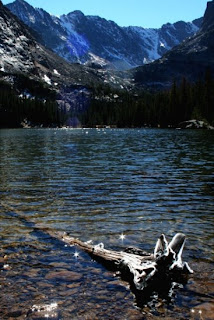As much as I have taught, I have learned from them as well, and the things they have taught me are valuable beyond measure. From my daughter, Mara, one of the really wonderful things I have learned is the importance of saying what I mean, and not shying away from speaking my truth. That’s not to say that I do this all the time, but as someone who’s always been pretty reserved, I’m making good progress. Mara is a very brave woman, and I admire her very much.
One of the treasured lessons I have received from my daughter, Brittany, is to look for the good. Brittany is one of the most positive people I know, moving happily and gently through life, seeming to always look for the silver lining in every cloud. What an amazing gift that is.
The lessons I learned from my children began almost immediately. They didn’t need to be grown up people to be wise beyond measure. I remember one night when my son, Eric, was two. I was tucking him into bed, as I did every night. I had recently started clairvoyant training, and was experiencing one paradigm shift after another as my awareness was being expanded to a much larger reality than I had previously known.
I had been doing past life readings at the Institute where I studied, and it was rocking my world, to say the least. I’d never really thought too much about past lives, or what eternity really meant in terms of a spirit’s expression. My believing was trying to catch up with what I was “seeing”.
Enter my wise and very verbal two-year-old son, who said that evening out of the blue, “Mommy, do you remember when we were babies together, and we were laying on that blanket on the floor touching each other’s faces?” There was my sacred lesson and my instant answer, that the past lives I had been seeing were real, and more importantly, that I could trust this new awareness of the clairvoyant space in the center of my head.
I’m happy to say that the lessons from my children continue. I’ve been struggling with a personal issue, and feeling pretty reactive to it. This morning I was “chatting” via text message with Eric, who is now almost 21, and he was telling me about how he is doing. It made me infinitely happy to hear that he “is just very conscious of setting the energy to how I want it to be every morning.”
His profound and simple words of conscious creativity were just the ones I needed to hear, to remember how to proceed in the face of a challenge. I helped teach him that, and today I learned it again from him.
We continue to teach, and remind each other, of truth, and of the best in life. I am deeply honored to know God through her perfect expression as my children.
May this tool be a blessing. . .









